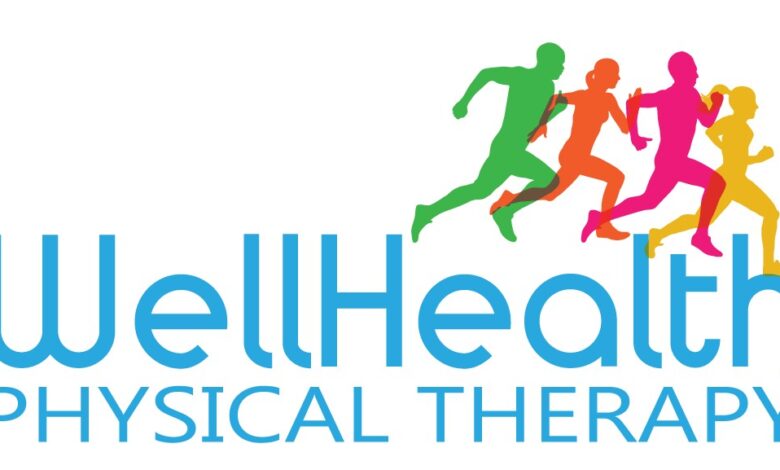Unlocking Muscle Growth: A Comprehensive Guide to Building Strength with WellHealth

In today’s fitness-conscious world, building muscle isn’t just about looking good; it’s about feeling strong, confident, and resilient. Whether you’re an experienced gym-goer or a newcomer to the world of fitness, understanding how to effectively build muscle can be the key to unlocking your full physical potential. With the help of WellHealth, a cutting-edge fitness platform designed to support your journey, you can embark on a transformative path towards a stronger, healthier you.
Understanding Muscle Growth
Muscle growth, scientifically known as hypertrophy, is a complex process influenced by various factors. It occurs when muscle fibers undergo microscopic damage during resistance training, prompting the body to repair and strengthen them, leading to increased muscle size and strength. Understanding the science behind muscle growth is essential for designing an effective workout and nutrition plan.
Muscles are composed of different types of fibers, including slow-twitch and fast-twitch fibers, each playing a distinct role in muscle function and adaptation to exercise. Slow-twitch fibers are more suited for endurance activities, while fast-twitch fibers are responsible for explosive movements and strength. By incorporating a variety of exercises targeting different muscle fibers, you can maximize muscle growth and overall performance.
Setting Your Goals
Before embarking on any fitness journey, it’s crucial to establish clear and realistic goals. Whether your aim is to build muscle mass, increase strength, or improve overall fitness, defining your objectives will provide you with a sense of direction and motivation. Take the time to assess your current fitness level, identify areas for improvement, and set specific, measurable, and achievable goals.
Setting realistic expectations is key to long-term success in muscle building. While it’s natural to aspire to rapid results, building muscle is a gradual process that requires patience, consistency, and dedication. Avoid comparing yourself to others or succumbing to unrealistic standards set by social media. Instead, focus on making sustainable lifestyle changes that support your health and fitness goals.
Nutrition for Muscle Building
Nutrition plays a fundamental role in muscle growth and recovery. To fuel your workouts and support muscle repair and growth, it’s essential to consume a balanced diet rich in macronutrients and micronutrients. Protein, often hailed as the building block of muscles, is particularly important for muscle repair and synthesis. Aim to include high-quality protein sources such as lean meats, poultry, fish, eggs, dairy products, and plant-based sources like tofu, legumes, and quinoa in your diet.
In addition to protein, carbohydrates are crucial for providing energy during workouts and replenishing glycogen stores in muscles. Opt for complex carbohydrates such as whole grains, fruits, vegetables, and legumes, which provide sustained energy and essential nutrients. Don’t overlook healthy fats, which play a vital role in hormone production and overall health. Incorporate sources of unsaturated fats like avocados, nuts, seeds, and olive oil into your meals to support muscle growth and recovery.
Crafting Your Workout Routine
Designing a well-rounded workout routine is essential for maximizing muscle growth and strength gains. A balanced routine should include a combination of resistance training, cardiovascular exercise, and flexibility work. Resistance training, in particular, is the cornerstone of muscle building, as it stimulates muscle growth through the progressive overload principle.
When designing your resistance training program, focus on compound exercises that target multiple muscle groups simultaneously, such as squats, deadlifts, bench presses, and rows. These compound movements recruit a greater number of muscle fibers and allow you to lift heavier weights, leading to more significant gains in strength and size. Supplement compound exercises with isolation exercises that target specific muscle groups to ensure balanced muscle development.
Leveraging WellHealth Tools
WellHealth offers a range of tools and resources to support your muscle-building journey. From personalized workout plans tailored to your goals and fitness level to tracking tools that allow you to monitor your progress over time, WellHealth provides everything you need to stay on track and achieve your desired results. The Muscle Building tag within the WellHealth platform is specifically designed to help you find workouts, exercises, and tips geared towards maximizing muscle growth and strength gains.
By leveraging the Muscle Building tag, you can access a curated selection of workouts and exercises that target key muscle groups, incorporate progressive overload techniques, and promote muscle hypertrophy. Whether you’re a beginner looking to build a solid foundation of strength or an experienced lifter seeking new challenges, the Muscle Building tag has something for everyone. With WellHealth as your guide, you can take the guesswork out of your muscle-building journey and make meaningful progress towards your goals.
Maximizing Recovery and Rest
Rest and recovery are often overlooked but essential aspects of the muscle-building process. While it may be tempting to push yourself to the limit with intense workouts every day, overtraining can actually hinder progress and increase the risk of injury. Adequate rest allows your muscles to repair and grow stronger, leading to more significant gains in strength and size over time.
In addition to scheduling rest days into your workout routine, prioritize quality sleep as part of your recovery strategy. During sleep, the body undergoes essential processes such as muscle repair, hormone regulation, and cognitive function restoration. Aim for 7-9 hours of uninterrupted sleep per night to support optimal recovery and performance.
Nutrition also plays a critical role in recovery, as it provides the necessary nutrients for muscle repair and replenishment of energy stores. Consuming a post-workout meal or snack containing protein and carbohydrates within 30-60 minutes after exercise can help kickstart the recovery process and maximize muscle gains. Hydration is equally important, as dehydration can impair exercise performance and delay recovery. Aim to drink plenty of water throughout the day, especially before, during, and after workouts, to stay hydrated and support muscle function.
Overcoming Plateaus
Plateaus are a common challenge encountered on the muscle-building journey. Despite your best efforts, you may find that your progress stalls, and you hit a plateau where gains in strength and size seem to plateau. While frustrating, plateaus are a natural part of the fitness journey and can be overcome with the right approach.
One of the most effective strategies for breaking through plateaus is to vary your workouts regularly. Your muscles adapt to the stress placed on them during exercise, so changing up your routine can help prevent adaptation and stimulate new muscle growth. Incorporate different exercises, rep ranges, and training techniques into your workouts to keep your muscles guessing and continuously challenge them to grow.
Another common cause of plateaus is inadequate nutrition or recovery. If you’ve hit a plateau, take a closer look at your diet, sleep habits, and stress levels to identify any areas that may be hindering your progress. Adjusting your nutrition plan to ensure you’re consuming enough calories and macronutrients to support muscle growth and optimizing your sleep and recovery strategies can help break through plateaus and get back on track towards your goals.
Injury Prevention and Management
Injuries are an unfortunate but inevitable part of the fitness journey. Whether you’re a seasoned athlete or a beginner, the risk of injury is always present, especially when engaging in activities like weightlifting that place stress on the muscles and joints. However, there are steps you can take to minimize your risk of injury and manage injuries effectively if they occur.
Understanding common weightlifting injuries and their causes is the first step towards injury prevention. Some of the most common weightlifting injuries include muscle strains, wellhealth and joint sprains, which can occur due to overuse, poor technique, or inadequate warm-up. By learning proper exercise form
You read also more

